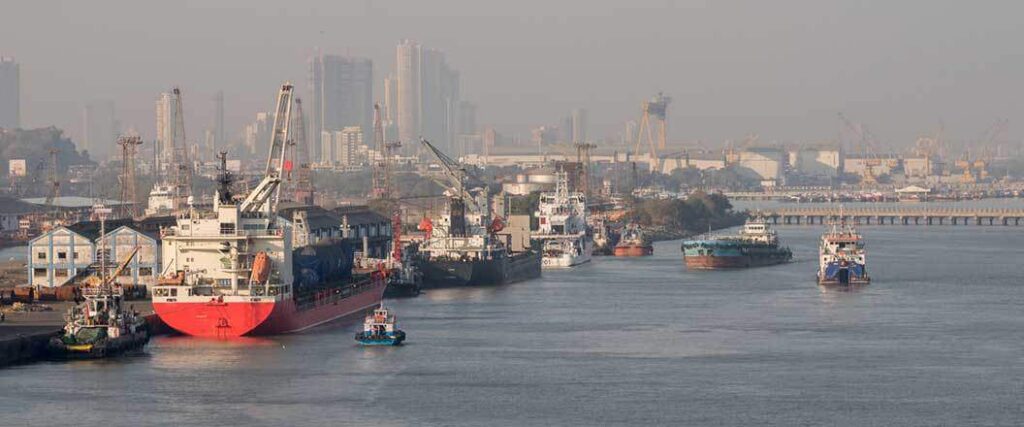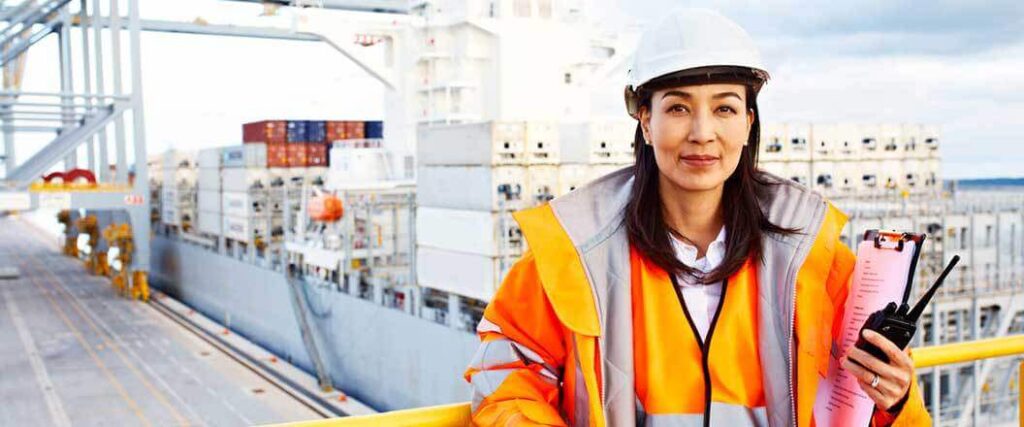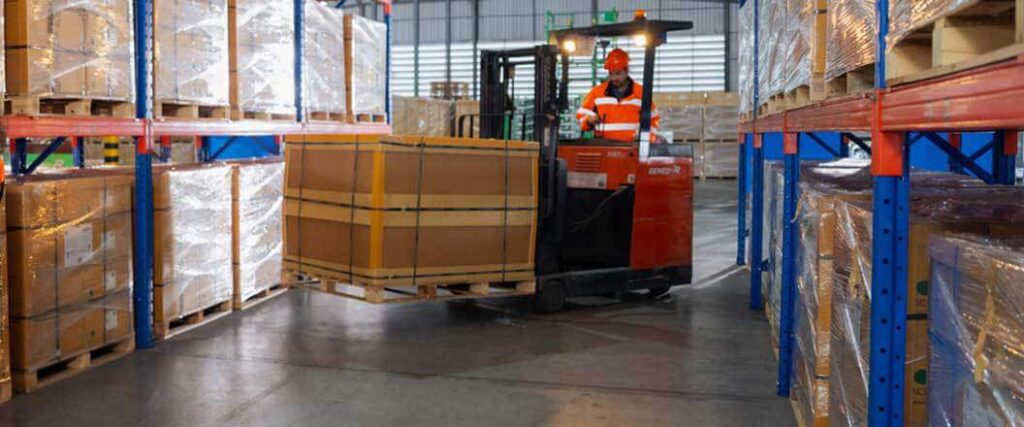The documents required for export are extremely important to understand. Certain documents will be the same for every shipment, while others will only be required for special circumstances. With so many types of paperwork to choose from, exporters can have trouble determining which one they’ll need.
According to the International Trade Administration (ITA), the list of documents required for export are:
Export licenses, Certificates of Analysis (COA) and Automated Export System (AES) may be needed as well.
Each document required for export has its own unique purpose. Exporters will need to understand each one to use it correctly.
Export documents are required because of the valuable information they provide. The information in each is used by importers, foreign customs authorities and domestic customs authorities.
Foreign customers use commercial documents to inspect their shipments for possible errors.
This includes discrepancies, such as:
If goods from the seller don’t align with the information provided in the export documents, foreign buyers will know something is wrong. They can notify the seller (exporter) of the mistake and work towards a solution.
Foreign customs officials will require specific shipping documents for incoming products as well. These regulatory bodies require documentation to determine if a shipment meets safety requirements, or if they need to track how much of a certain item enters the country. Foreign regulatory agencies can even use export documentation to identify prohibited goods.
U.S. exporters will need to provide the correct paperwork to domestic customs authorities, too. Domestic customs authorities use export documents to compile trade data and track certain regulated products. Documents can also specify the end user of the goods and their intended end use.
Read our article on Schedule B numbers if you don’t already know what they are. These numbers might be needed on certain documents required for export.

There are many important documents exporters will need to send with their shipments. Some documents provide similar information, but each one serves a distinct purpose in the exporting process.
Pro forma invoices are used as a negotiation tool between the buyer and seller. These documents provide much of the information that both parties will need before conducting a transaction.
Information in the pro forma invoice includes:
The pro forma also includes a declaration from the exporter to provide all listed product services to the buyer. Pro forma documents specify the price the seller charges and the date the export shipment will arrive. Once the document is completed, the buyer and seller can negotiate with one another on what aspects they want to change.
Commercial invoices are used when an official export transaction occurs and also serves as proof of payment. These are very similar to pro forma invoices, but with some added features.
Foreign customs authorities frequently use commercial invoices to determine the true value of goods in a shipment. Based on the value of goods, a corresponding duty rate will be applied.
Some customs agencies in foreign countries will have their own requirements for this invoice, such as:
Before shipping their goods off, exporters should check the commercial invoice requirements for their importer’s home country.
Packing lists are another common export document and are very similar to commercial and pro forma invoices. That said, export packing lists contain even more details about a shipment.
This includes details such as:
Exporters can also include safety instructions for handling the freight listed on the packing list. Insurance agencies will require this document if a claim needs to be filed.
Domestic and foreign customs authorities have their own uses for packing lists as well. Customs regulators examine this list to check the cargo in an export shipment. Therefore, cargo information on the packing list should be reflected in the commercial invoice.
Certificates of origin (CO) are extremely important documents used in international trade because they tell importers how goods were made in a particular country.
A CO will tell importer if goods were:
There are two specific types of COs that exporters need to be familiar with.
A generic CO identifies the home country where exported goods were grown or produced. Typically, this type of CO is given an official signature from the Chamber of Commerce or the Consulate Office in the exporter’s home country.
Obtaining and filling out a generic CO can be a time-consuming process. To speed things along, exporters can complete their CO online and have it emailed or printed and mailed to them. You can also use the services of an export agency to file for a CO on your behalf.
FTA COs are used when an importer wants to apply for preferential tariff treatment. Every FTA has different rules of origin. Exporters will need to follow these rules explicitly for their importer to receive a reduced or eliminated the duty rate.
While COs are important, they’re not always required for export. There are plenty of countries exporters can send goods to that don’t share an FTA with the U.S. and whose customs authorities won’t request a generic CO.
The United States Mexico Canada Agreement (USMCA) is vital to U.S. trade. Check out our article on the benefits of USMCA if you want to export goods to Mexico or Canada.
Another essential document required for export is the General Certificate of Conformity (GCC). This piece of paperwork demonstrates that the products within an export shipment meet the standards of the importer’s country.
If an exporter didn’t manufacture the goods they sent to another country, they will need to obtain information about the products from the manufacturer or related official. The information provided is used to fill out the GCC.
Export shipments will need to be accompanied by a lading bill. There are multiple lading bills that correspond to a specific mode of transportation.
This includes:
Exporters need to understand these lading bills for each mode of transport that will carry their shipment.
An ocean Bill of Lading (BOL) is required for export when a shipment travels by vessel. This lading bill is a contract of carriage and states the title for cargo. The document also identifies the two parties partaking in the export transaction and gives a detailed description of the goods.
There are two specific types of ocean BOL:
The straight BOL is non-negotiable and is used when goods have already been paid for. Also known as a consignment BOL, only the consignee listed in this document can take possession of cargo when it arrives at the destination port. A consignee can do this by providing identification to show they’re the person listed on the straight BOL.
Exporters that want specific terms and conditions met before goods are released use a negotiable BOL. Importers may want to use this document when their payment method is a letter of credit. Ocean transportation is the most common form of international shipping. Therefore, exporters are more likely to use an ocean bill of lading than any other.
The air waybill (AWB) is a document required for export via air. Companies that transport goods to other countries by plane use this document as a receipt of goods. Importers and exporters use air waybills as contracts. These documents also provide information on both parties involved in the transaction and the freight that’s being transported.
There are no negotiable variations of this document. AWBs won’t specify which flight freight will travel on or when an export shipment will arrive at its destination. Exporters will need to obtain their AWB from the International Air Transport Association or IATA.
The IATA is the organization responsible for designing and distributing this type of shipping document.
There are two types of AWBs that exporters can obtain.
While AWBs don’t state the flight an export shipment will travel on, airline specific AWBs do state the airline responsible for carriage.
They do this by providing the airline’s:
Airline specific AWBs should also have a unique waybill number. A neutral AWB has a similar format and contains the same information as the airline specific variation. However, the neutral bill excludes details about the airline transporting the export shipment.
While ocean shipping is much more common, international air transport has been on the rise over the past few years.
| Year | Freight in Million Metric Tons |
| 2021 | 65.6 |
| 2020 | 55.4 |
| 2019 | 61.5 |
| 2018 | 63.5 |
| 2017 | 61.5 |
Provided by Statista
Due to the frequency of air freight shipping, exporters should understand air waybills thoroughly in case they need to ship by plane. The Electronic Air Waybill Resolution 672 gives exporters the option to submit their document electronically. This provides exporters a more convenient and less time-consuming way to complete an air waybill.
Inland BOLs are very popular in international trade. They can be used when freight is brought to the ocean port or airport for shipping. However, the document can be used when freight is transported to another country entirely by rail or truck as well.
Like the other lading bills, the inland BOL is a contract between the importer and exporter. Carriers use the document as a receipt. The document also states who the importer and exporter are in the transaction and provides details about the shipment.
This BOL doesn’t include any special provisions like other lading bill variations. If exporters plan to send their export shipment overseas, they’ll need to use this piece of paperwork in conjunction with an ocean BOL or an AWB.
Check out our article on exporting to Canada to find out how to send goods to our northern neighbor.

Domestic customs authorities may require an export license to accompany your goods. There are three steps that exporters have to follow that will reveal if an export license is needed.
These steps involve checking on the:
According to the ITA, an export license will not be needed for most shipments. That said, exporters should still follow each step carefully to determine if their shipment should have one.
Working an exporter of record can also help you find out what you need to make sure you're complying with any special requirements.
Exporters should find out if a government agency regulates the merchandise they want to export. Most products that require an export license are regulated by the Bureau of Industry and Security (BIS).
The BIS oversees the Export Administration Regulations (EAR). If a commodity is subject to the EAR, exporters will need to find the Export Control Classification Number (ECCN) for their item. The ECCN is found by consulting the Commerce Control List.
Not all commodities have an ECCN that corresponds with them. Goods like these will be classified under EAR99. Despite not having an ECCN, products with this classification will still be subject to EAR regulations.
Exporters who have determined their product has an ECCN or is classified as EAR99 will have to check if general prohibitions apply. Products that are subject to general prohibitions 4 through 10 will need to have an export license. There are a total of 10 general prohibitions and they can be found in part 736 of the EAR.
Although the BIS is the main agency that will require an export license, there are many other federal agencies in the U.S. that may have this requirement as well.
Federal agencies that will require an export license are the:
Exporters will need to conduct thorough research on all federal agencies that might require a license before they attempt to ship their goods to another country. Working with an export agency for regulated products is highly recommended.
Read our article on exporting fruit to learn how to send this heavily regulated commodity to another country.
The BIS has a Commerce Country Chart that helps exporters determine if a license is required for a certain export destination. The chart has an alphabetical list of countries that can be exported to and a list of categorized goods that might need a license.
Boxes within the chart are either left blank or filled with an X. Boxes marked with an X mean a license is required to export that product to the corresponding country. Exporters should refer to the Commerce Country Chart if their commodity isn’t subject to EAR general prohibitions 4-10.
Exports sent to countries with comprehensive sanctions on them require a license as well. Each country is sanctioned for various reasons. Therefore, exporters will need to follow different licensing requirements when sending goods to each.
The end use and user may determine if an export license needs to accompany a shipment. End users are the person or people who will use the product. End use refers to how the product will be employed by the end user. The U.S. government keeps a Consolidated Screening List (CSL) that keeps track of four different types of restricted parties.
These include:
Within the CSL are separate lists for each of these restricted parties. Exports cannot be sent to end users on the denied, unverified and military lists. However, shipments can be sent to entity end users if an export license is provided. A license will show that the end user won’t participate in restricted end uses with the goods.

Certificates of Analysis (COA) declare that products have received testing that caused a specific result. The FDA uses this document for certain goods they regulate.
This includes:
A COA is usually issued by a certification authority, like a laboratory. However, exporters can issue the document if they’re given permission by their importer. COAs aren’t the only type of FDA certificate exporters might need.
Other FDA certificates are:
When organizing their shipment, exporters should closely review their goods and determine if they need a COA document for export or another kind of certificate.
U.S. exporters should research export control basics before they send their goods to another country.
The U.S. Census Bureau is another government agency that’s involved in the exporting process. While the agency doesn’t regulate specific commodities, it does compile statistics on U.S. trade. The agency does this by collecting Electronic Export Information (EEI) from the Automated Export System (AES).
Exporters will need to the AES when:
Exporters should thoroughly research each commodity in their shipment and the destination country to find out if an AES has to be filed. If exporters have determined that filing with the AES is necessary, they will need to access the Automated Commercial Environment (ACE) platform.
AES filing should occur between one and 24 hours before goods leave the U.S. for a foreign country. Express export shipments allow shorter filing. An AES filing for vehicle exports can be submitted up to 72 hours before shipping. Completing an AES document for export is important, but there are certain exceptions to this procedure
This includes when:
If exporters are exempt from filing an AES document for export, they can note this in their chosen lading bill.
Learn the differences between a Schedule B vs HS Code before exporting your goods.
Cargo Export USA has everything you need regarding the documents required for export. Our experienced export specialists can identify which documents your shipment requires and assist you when filling them out.
Some other services we provide to our customers include:
The team at Cargo Export USA can help with all of your exporting needs. Connect with us or call our team at (866) 301-0635 if you have questions or concerns about our services.